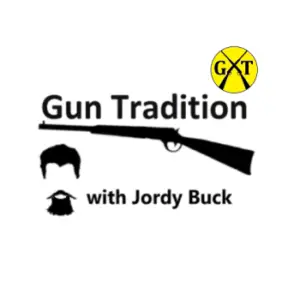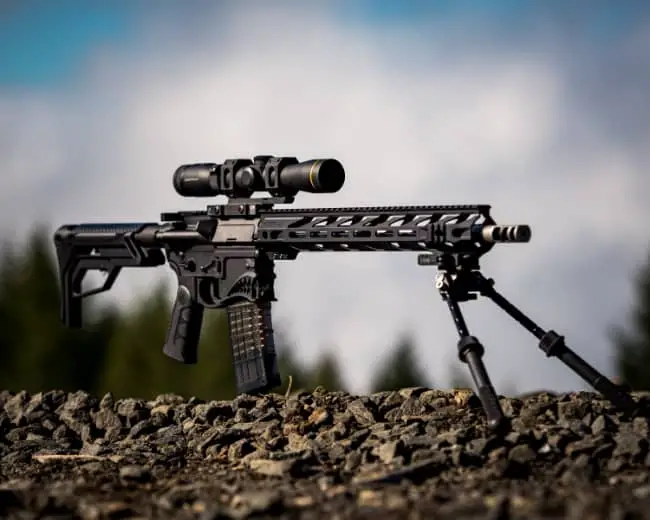I fired my first long gun at nine years old. It was too long, too heavy, and too hard recoiling for my scrawny build at the time. With my kids getting older, I’m looking into what makes a good youth gun.
A deer rifle for a 12-year-old needs to be youth size stock, at least 24 caliber, and have no more than 10 ft/lbs. of recoil. Smaller framed 12-year-olds should be restricted to recoil under 7 pounds. .243, 6.5mm Grendel, and 7.62x39mm are good calibers for most 12-year-old deer hunters.
That’s not all; there’s a lot more to it. Now let’s dive deep into the caliber, stock rifles, and customization you can do to make the perfect rifle for your new young hunter.
The Variables of a Deer Rifle for a 12-Year-Old
First of all, like with most things, there are variables. The largest variable is the size of your 12-year-old. Sure, we have average figures, but some 12-year-olds could be a stand-in for Mighty Mouse. Then there are those who are getting calls about a linebacker position on the varsity team.
Humans come in a wide assortment of shapes and sizes. Thankfully, so do rifles. It’s also a cinch to customize a rifle to fit a certain individual. A well-fitted rifle that is comfortable to the shooter will do more to instill confidence in shooting than anything else that can be done.
Most often, a 12-year-old preparing for hunting already has some limited experience with firearms. Generally, it’s a case of a youth getting their first “big boy” or “big girl” rifle. boy, nothing made me feel more like a man than when my dad gave me my first gun.
Youth guns are fairly standardized with a 12-inch length of pull. That’s 12 inches from the trigger to the butt of the stock. The standard is based on the average-built youth shooter. How old is the average youth hunter? Somewhere around 12 or 14.
In my opinion, the 12-inch length of pull is a fine starting point. But, length of pull is the least important factor of a rifle fit. I mean, it’s certainly important, but it’s a cinch to increase or shorten the length of pull. If everything else fits, length of pull doesn’t have to be a deal breaker. Any gunsmith can change length of pull in a jiffy.
More important than length of pull, because it’s not easily adjustable is riser height. The riser is the part of the stock that your face goes against. Riser should be the perfect height to accommodate the size of your head and cheekbone. A smaller face needs a taller riser to bring it up to the sights.
You can add height easy enough if you need to. There are dozens of inexpensive options that wrap around or screw on the buttstock to add height. With a wood stock, you can take off material to shorten it, but you can’t really do that on a plastic stock because most of them are hollow.
Even so, it’s no small chore to shorten riser height, and it’s very easy to take too much off. Your best bet is to get a rifle with a riser that’s about right from the start. Take the lucky young kid to the gun store and let them try every youth rifle with sights or a scope they have.
If the rifle doesn’t have sights or a scope, you won’t know if the riser is right. The riser should keep the shooter’s head in about the perfect spot to automatically have a good sight picture with the sight or scope they will use.
Customizing the Perfect Deer Rifle for a 12-Year-Old
If you are using a scope, the riser needs to be higher than if you will be using iron sights. Most hunting rifles use scopes, so a lot of stocks come with what may seem like a high riser. It’s more suited to lift the face higher to meet a scope mounted three quarters of an inch above iron sights.
I mentioned adding height to a riser if needed. If you do need to add height, I suggest a kydex (fancy word for plastic) adjustable riser. They are cheap, durable, and can be adjusted to fit multiple shooters or scope heights.
A point that a lot of people overlook it mounting height of a scope. It’s the old rule that you mount your scope as low to the bore as you can. That’s a bigger deal with little people. A small face will probably not come up as high on the stock as your adult face.
There are low profile scope mount options that are generally more suitable to a young shooter. If the scope is a bit too high on a factory stock rifle, you might be able to remedy that with a low-profile scope mount. That would be much better than adding height to the riser in many circumstances. If you go that route, you can always put the higher scope mount on as your youth hunter grows.
For young hunters, I suggest not going with iron sights. They are tricky to master and easy to disappoint. With a scope, it’s much simpler to pick out your target an make a good shot. With iron sights, you have to concentrate on the front pin, the rear notch, and the target. That’s a lot at once.
With a scope, there are only two things to look at, the crosshairs and the deer. Most crosshairs are easy for the eye to pick up, and the reticle can be focused for maxim clarity custom to the shooter. If the distance isn’t going to exceed 100 yards, a red dot sight can be a fine option too.
Maximum Recoil for a 12-Year-Old’s Deer Rifle
In 1909, the British Textbook of Small Arms stated that the maximum allowable recoil for a standard military service rifle should be 15 ft/lbs. That’s basically 30-06 territory. For a youth shooter, it should be a minimum of 1/3 less than that. That comes to 10 ft/lbs. of recoil.
Realize that a 100-pound youth shooting a youth model .243 will feel more recoil than the average male adult firing a Springfield 30-06. Let that sink in for a minute. A youth half your size should realistically only expect to handle half of the recoil you are comfortable with.
A small framed youth hunter should have a small recoiling gun. now, do you know how much common hunting rifles recoil? If you’ve never checked it out, take a minute to look at this awesome resource by Chuck hawk on rifle recoil. https://www.chuckhawks.com/recoil_table.htm
There are a few ways to mitigate recoil. The simplest option is to ad weight. An increase in weight is a decrease in felt recoil. If your youth shooter will be hunting from a bling with a rest, by all means get a gun with a heavy barrel. You can gat heavier custom stocks too.
The problem with a lot of youth rifles is that they come lighter than the full size, but shooting the same cartridge. That means it recoils more. If you give a youth a hard-hitting rifle, they will develop bad shooting habits, won’t enjoy shooting it, and won’t really want to hunt with it.
Bolt actions are nice, but semi-auto actions reduce recoil a bit with because some of the energy is used to cycle the action. I always suggest a semi-auto as a youth gun.
You can further reduce recoil by adding a muzzle brake to the barrel. I always suggest this as well. If you want to look at an amazing recoil reducing muzzle brake, then you have to check out the Alamo Four Star CIB muzzle break. After extensive testing, it’s the best on the market. It reduces actual recoil by over 50 percent in some cases.
Some, but not all manufacturers are offering youth model rifles with a threaded barrel so you can add a muzzle break of your choice. If yours doesn’t have one, a gunsmith will usually thread a muzzle for around a hundred bucks.
Best Deer Rifle Styles and Calibers for a 12-Year-Old
So, we’re looking for ability to customize and preferably semi-auto. It’d be nice if it had a threaded muzzle too. The very first thing that comes to mind for me is an AR15. The AR15 generally comes with an adjustable length of pull, many come with an adjustable riser, it’s endlessly customizable, and it’s available in dozens of different calibers.
With an AR15, and any other semi-auto rifle, you don’t have to work the action in between shots. Whenever you can reduce the numbder of steps involved, you can concentrate more on the remaning tasks, like aiming.
If you are considering the AR15 platform for a youth gun, which is what I recommend, there are good options in 6.8spc, 5.6 Grendel, 7.62×39, and the new 350 Legend. All four of them fall within the realm of adequate cartridges both for deer and for a youth-sized shooter.
If for some reason, you think the AR15 looks too scary, check out the Ruger Mini 14 and Mini 30. Ruger is using a re-vamped design that’s both more reliable and more accurate than the original models. Price wise, they run a bit more than an average AR15, but around the same as a good one.
If a bolt gun is more what you are looking for, first reconsider the AR, then check out Savage, Ruger, and Tompson Center. They all are on the more affordable side of things. Savage has the cheapest option, but Ruger and TC are a bit nicer.
You will find options in 7.x2x39, 6.8spc, 350 Legend, and .234 Win. They will all do the job. The 7.62×39 is the easiest shooting of the bunch with around 7 ft/lbs. of recoil in an average rifle. that’s about half that of a stout 30-06 load.
Now, through a gas action (semi-auto), and with a really good muzzle break, you can reduce the felt recoil by 60 percent. So you could look for a rifle that has recoil into the 12-15 foot pound range in that setup, but seriously, it’s not needed. Make shooting enjoyable. Get the easiest, sweetest shooting setup you can.
Take a 7.62x39mm AR15 and put a Alamo Four Star CIB muzzle break on it and let your youth shooter kill a deer out to 200 yards with the recoil of a .223, about 3 ft/lbs. honestly, I’m not a caliber snob. I just think new shooters should have a sweet, easy shooting rifle to make hunting more enjoyable.
Whatever you get, maybe a .234, 30/30, or even a 25-06: make sure it fits the shooter, make sure it doesn’t recoil harshly for a kid, and make sure you put a good muzzle brake on it.

